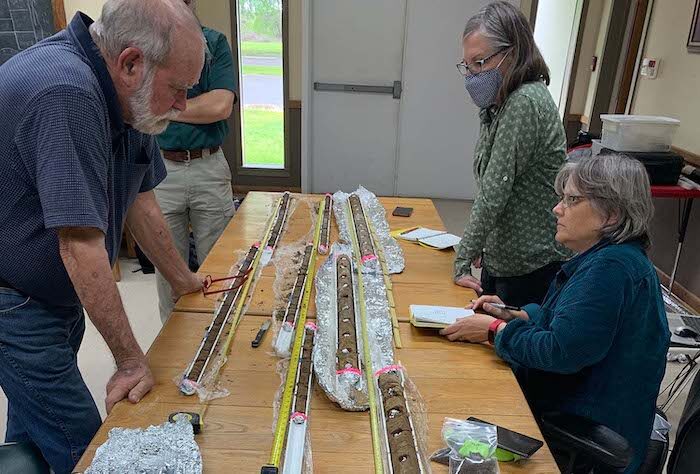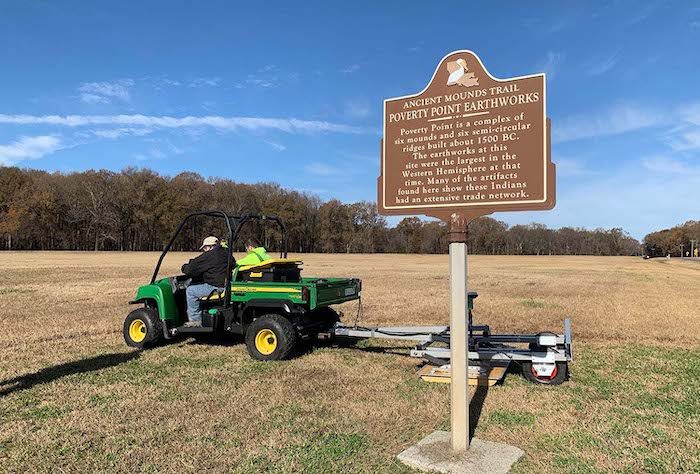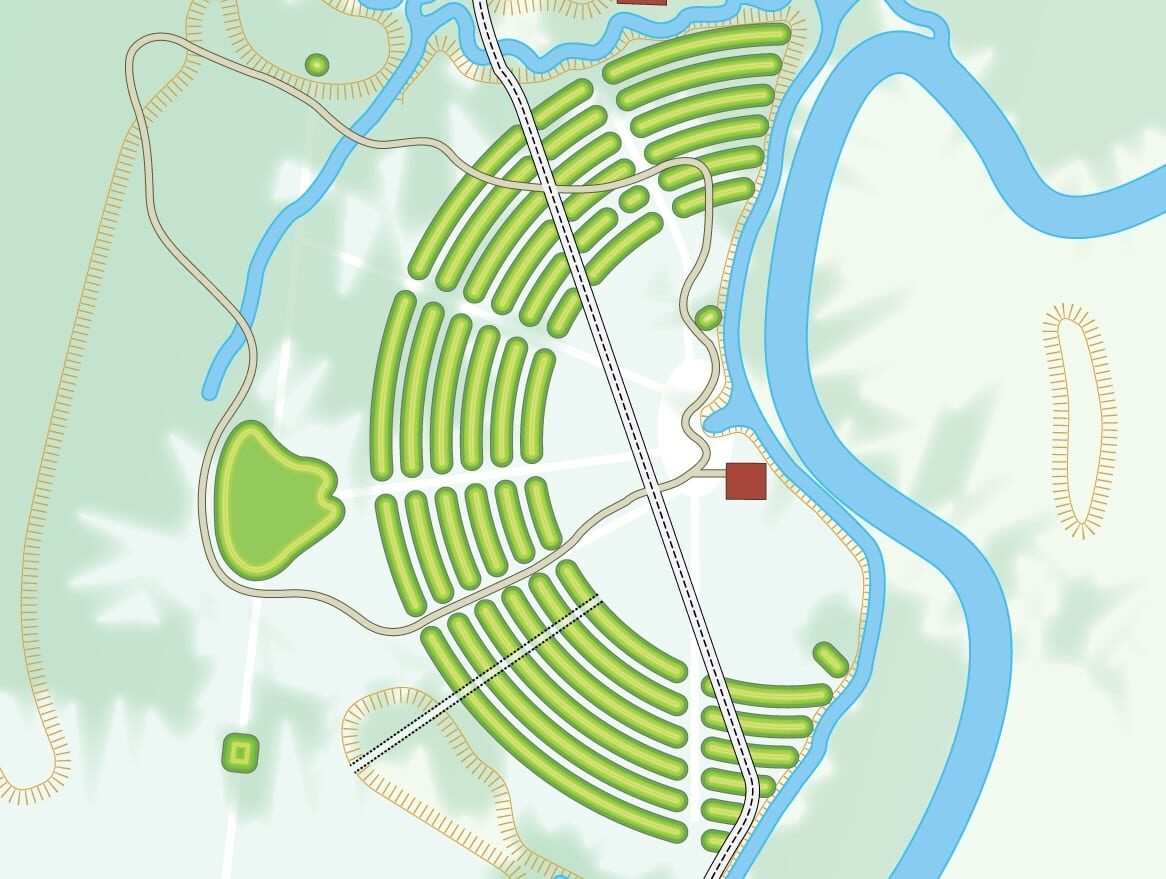
These earthworks, together with a buried, mound-like feature with unique soil properties unlike any of the known earthworks at the site, demonstrate that the Plaza at Poverty Point has a more elaborate construction history than we knew.Poverty Point World Heritage Site is slowly revealing her secrets.
Diana Greenlee, Ph.D.
Diana Greenlee, Ph.D., station archaeologist at the ancient monumental earthworks and adjunct professor at the University of Louisiana Monroe School of Sciences, said recent archaeological research shows the site is "much more complex than previously realized."
The joint project by ULM and Minnesota State University Moorhead (MSUM ) was funded with a 2019 Preservation Technology and Training Grant from the U.S. Dept. of the Interior, National Park Service.
Greenlee, Rinita Dalan, Ph.D., of MSUM, and their colleagues focused on Poverty Point's central Plaza. This 43-acre area was created thousands of years ago by removing the original topsoil and then adding fill dirt to build a raised, near-level surface. To look at the Plaza today, one would not suspect what is hidden below.
Parts of the Plaza were surveyed using a sophisticated ground penetrating radar developed in Norway and used extensively by the Norwegian University of Science and Technology. Arne Anderson Stamnes, Ph.D., of the university's Terrestrial, Marine, and Aerial Remote sensing for archaeology research group, operated the GPR.
Nearly 2,000 reflectors, which are objects or soil disturbances that reflect the radar signals, were identified. These results were compared to other geophysical surveys.
Then, several targets were tested using a combination of soil coring, analyses of soil samples, and sieving for artifacts, and by lowering a geophysical sensor down the cored holes.

An underground ridge, formed by removing more of the original soil from both sides, stretches across the Plaza from the West Plaza Rise to Mound C.
"These earthworks, together with a buried, mound-like feature with unique soil properties unlike any of the known earthworks at the site, demonstrate that the Plaza at Poverty Point has a more elaborate construction history than we knew," Greenlee said.
Participating in the research with Greenlee, Dalan, and Stamnes were Thurman Allen, a soil scientist retired from the Natural Resources Conservation Service; Rachel Stout Evans, a soil scientist with the Natural Resources Conservation Service; Michael Hargrave, Ph.D., an archaeologist retired from the Engineer Research and Development Center; and Berle Clay, Ph.D., an archaeologist retired from Cultural Resource Analysts, Inc.
Poverty Point WHS, located in West Carroll Parish in northeast Louisiana, is a complex of earthen mounds and C-shaped earthen ridges built some 3,700 to 3,100 years ago. It is one of only four archaeological sites in the United States that has earned the WHS designation.




The history books need burning and rewriting and those responsible for supporting such rubbish need to be exposed as charlatans.